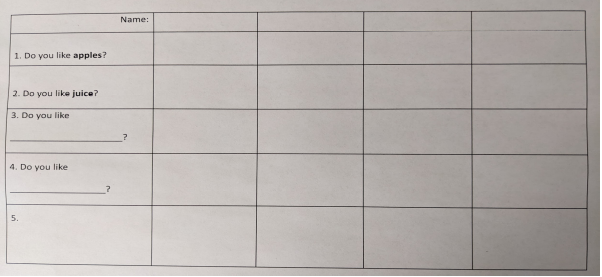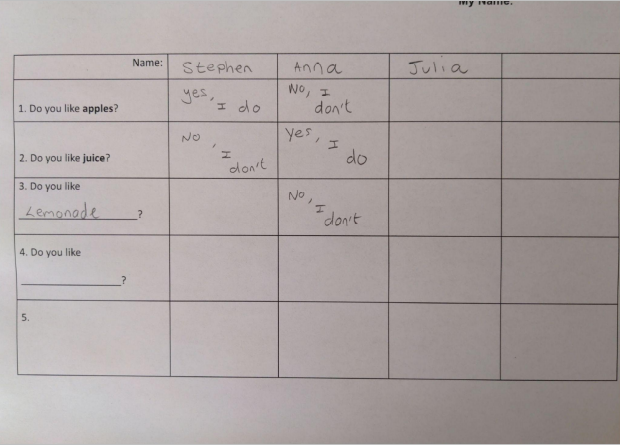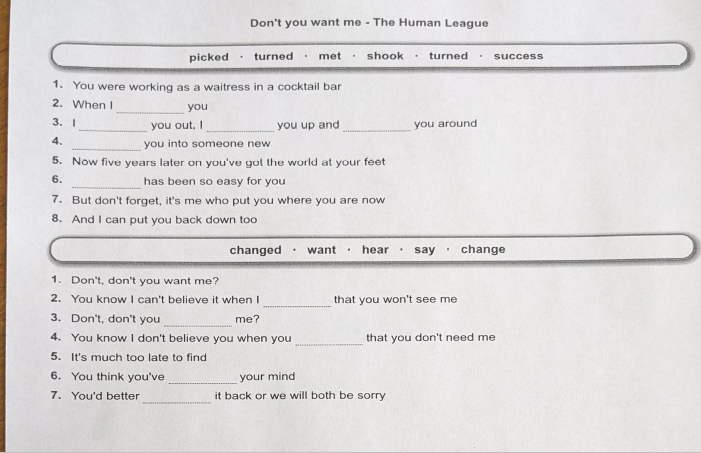Seasoned English teachers have a bank of classroom activities that they can use on the spot and as the situation requires. New teachers don’t have this, and besides all the other new things they have to learn, they need to know some reliable and adaptable activities. So if you’re a new teacher, this article is for you.
The activities new teachers learn become the foundation of their activity bank, which will become the linchpin of their future lessons. With this in mind, I have identified three activities that, from my experience in training new teachers, make an excellent starting place for a new activity bank.
I would like to share these activities so that any new teachers might put them straight into use. If you are an experienced teacher, you may not find any new activities here, but you might get some inspiration for your next class.
Activities for you
It was hard to focus on just three activities here. However, I realised that often the most useful activities share the following features:
- an adaptable language focus
- they don’t require extensive knowledge of technology
- they can be used with nearly any level
So here are the activities that have those features and which I feel new teachers have got the most mileage from.
1. A Class Survey
The class survey is a classic EFL activity, chiefly because it is easy to produce and helps students to practise all four skills.
Essentially, the students complete a survey of a set number of students in the class, which helps them to practise a specific language structure in a controlled group speaking and writing activity.
Preparation
Here’s an example of a very simple survey which was designed for lower level younger students. It includes some pre-made questions as models to prompt students to generate their own questions. It also includes space for students to write the names of the people they speak to.
Instructions
Distribute a copy of the survey to each student and demonstrate your example questions.
Then, elicit some examples of questions that students could create for their survey and get them to finish writing their questions on their survey.
Next, students stand up and speak to enough different people to complete their survey. The students mingle around the class and write the name of the person they spoke to and their answers on the survey.
Here’s that example survey again, this time it has been started, with some of the information included.
Potential uses
This group activity works well for a huge variety of language focuses. All you need to do is generate questions to fit your language aim, for example changing the focus from do questions to going to or future perfect or conditionals.
2. Strip Race
A strip race involves adapting a controlled practice exercise, just like you see in many coursebooks, into a competitive and “active” activity.
Preparation
Take your coursebook and either photocopy multiple copies of an exercise with multiple questions – or write your own questions. I would aim for a maximum of ten questions. Next, cut the questions into strips, while still keeping the paper together as one, with the end result being that the paper somewhat resembles a hula skirt.

Instructions
Produce multiple copies of the paper with the strips cut and spread them out around your classroom.
Next, assign students into pairs, then each pair nominates a writer and a runner.
The runner has to take a single strip and return it to their team. Then, the writer and runner work together to complete the question on the strip. The activity continues like this until all the papers are finished.
Potential Uses
All the activities here are suitable for a variety of language focuses, but the difference with the strip race is that it makes a dry practice exercise active. I often use it for a review activity, for example checking vocabulary or grammar-based homework, by adapting questions from the homework book.
3. A Song Gap Fill
So far, I’ve shown you activities that are more communicative, with a variety of skills being engaged. The next activity, the song gap fill, focuses purely on listening and writing.
Preparation
Find a song that contains enough examples of your target language and which has clear singing and lyrics. Such songs are usually each to find with a search prompt such as: ‘first conditional songs’ and by focusing on well-known acts such as The Beatles. Next, you extract the lyrics of the song and create gaps where the target language should be.
To generate those gaps you can use an online gap fill generator, which you can find quickly with a search engine. After this, print out the song gap fill exercise and you are ready.
Here’s an example of a gap fill exercise that largely focuses on past simple verbs. I used the gap fill generator at random-idea-english, which includes the missing words.
Instructions
Ensure you have enough copies of the song gap fill exercise for each student and distribute copies to each student.
Students listen and try to fill the gaps. I recommend listening as many times as you feel students need to complete the gaps but generally two or three listenings are enough.
Potential Uses
Like the other activities here, this is easy to adapt, based on your language focus. You can use this activity to add a little novelty to the class. After all, listening to music is a nice break from coursebook audio and with the right songs, you can focus on vocabulary or grammar.
Wrapping up
There are many more activities that I could have included in this article and the activities presented here could be adapted and used in many different ways, but I have kept them to the basics.
There’s a reason for this: if you are a new teacher, I want you to experiment and develop them into activities that work best for you. On the other hand, if you are an experienced teacher, you probably don’t need an explanation of the activities.
I hope these activities will help you in your next classes and beyond that, because they are long term activities that will serve you well.
***
If you enjoyed this article, you might also be interested in this post on rethinking gap fill exercises and this insightful article with the best teaching tips for new teachers.

Stephen Tarbuck
Stephen Tarbuck is an EFL teacher based in Toruń, Poland. He also writes articles on a variety of TEFL topics, which you can find more about at his blog: stephentarbuck.wordpress.com.









